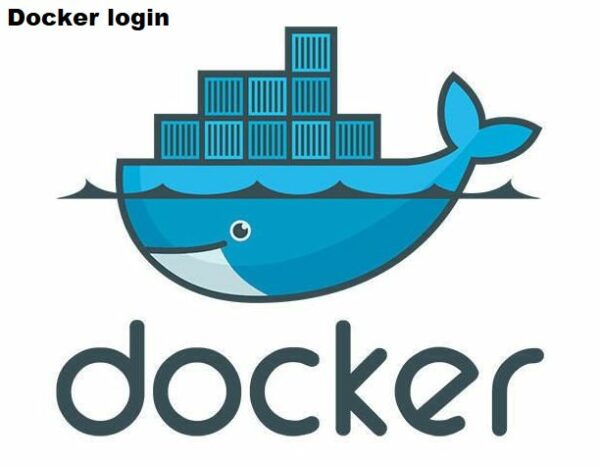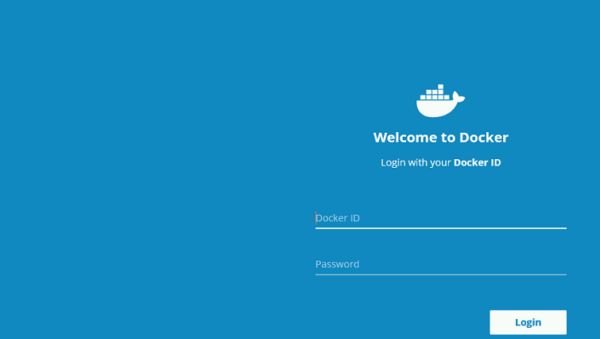Docker login
Docker Login: Fresh Docker installations, by default, use Docker Hub for public interactions. By logging in, you can access your stuff and take advantage of less stringent Docker API rate constraints.
In this tutorial, we’ll cover Docker Hub authentication and using your registries to log in to the Docker CLI. We’ll also examine a few frequent problems with Docker’s credential management.

Logging Into Docker Hub
The Docker CLI can access private content only accessible to your account by logging into Docker Hub.
Additionally, you will receive the higher rate limit threshold of 200 picture pulls per six hours instead of 100 draws per six hours provided to clients who need to be authenticated.
To enter your credentials and authenticate with the server, use the docker login command:

$ docker login
Username:
Password:
Your username and password must be entered interactively. Using the credentials, Docker will try to connect to Docker Hub.
If the details are approved, you will see Login Succeeded. Your.docker/config.json file will house the authentication token that Docker has provided.
$ docker login
Login Succeeded
Access Tokens for 2FA Logins
Accounts on Docker Hub that have two-factor authentication enabled must enter an access token rather than a password.
Click your profile icon at the top-right of the Docker Hub web UI and select “Account Settings” from the drop-down menu. Use the left sidebar to switch to the “Security” tab.

To generate a Personal Access Token, click the blue “New Access Token” button. Because you won’t be able to retrieve the displayed token key in the future, write it down. When you run docker login back in the CLI, use this token instead of your regular password.
Non-Interactive Logins
Your username and password can be entered as command-line flags:
$ docker login --username demo --password example
This is helpful when logging in programmatically or as part of a CI process. Use the —password-stdin switch to tell Docker to read your password from STDIN to boost security.
By doing this, you may pipe in a password file and prevent your shell history and CI task logs from including plain text passwords.
$ cat password.txt | docker login --username demo --password-stdin
Logging Into Private Registries
You can connect to self-hosted registries using the docker login feature. The command’s first argument should be the hostname and port of your registry. When no parameter is provided, Docker Hub is always used.
$ docker login
registry.example.com
Username: Password:
When working with custom registries, you can still use the —username, —password, and —password-stdin parameters.
You can use the docker login command as often as necessary to log into different registries simultaneously.
Where USER is your Docker Hub username.
After then, a request for your Docker Hub access token will appear. You can log into your Docker Hub account and download images at any time by pasting the ticket into the CLI prompt.
Make sure that your machine is running the most recent version of Docker if you are still experiencing problems (be it Docker, docker-ce, etc.). An outdated Docker engine version may interfere with Docker Hub authentication.
Manually Adding Credentials
By including an existing authentication token in Docker’s configuration file, you may occasionally want to log into a registry manually. This is helpful if you wish to supply a pre-obtained pass as a pipeline variable in CI settings.
By making changes to your.docker/config.json file, you can manually add auth tokens. At the beginning of the file, under the auths field, add a new key for your registry.
As the key’s value, provide an object; this object must have a single auth property that includes your token. Here is an illustration for the register at example.com:
{ “auths”: { “registry.example.com”: { “auth”: “aWxtaW9ud…” } } }
You can add a Docker Hub token by specifying https://index.docker.io/v1/ as the registry URL.
Multiple Accounts For One Registry
The authentication mechanism’s requirement that registries link one-to-one with user accounts is a severe constraint. It is not feasible to log in to several users at the same register simultaneously. This is frequently desired when using a private registry that divides permission among projects or teams.
You can minimise the problem by dividing your credentials into multiple configuration files; you can minimise the pain. The —Docker CLI uses a config flag or environment variable DOCKER CONFIG to specify the file to load for each invocation.
When you have a lot of projects to work on, you can rewrite the command docker such that it chooses the appropriate config file for your working directory automatically by using a shell alias or function.
alias docker=”docker –config ~/docker/$(basename $PWD).conf $1″
Credential Helpers
By default, Docker keeps your login information insecurely in /.docker/config.json. Integrating a credential assistant utility will increase security. Enabled helpers are given the ability to handle instructions delivered by Docker in response to CLI activities, such as a credential store, get, and delete.
Using the credHelpers field in your configuration file, you can link a registry with a specific helper program:
{
"credHelpers": {
"registry.example.com": "pass"
}
}
Instead of storing credentials for registry.example.com in the config file, this example uses the pass credential helper.
The Windows Credentials Manager, the D-Bus secret service, and the macOS keychain are all integrated into the Docker docker-credential-helpers bundle, including the Pass helper.
Logging Out
You can log out manually or with the docker logout command by removing the registry section from your.docker/config.json file.
$ docker logout
Like docker login, logouts by default target Docker Hub. By giving a private registry’s hostname as the command’s sole argument, you can log out of it:
$ docker logout registry.example.com
Common Problems
Faulty or missing credentials cause the majority of Docker authentication problems. Try logging out and back in again if authentication fails after you have already logged in:
$ docker logout
# OR
$ docker logout registry.example.com
$ docker login
# OR
$ docker login registry.example.com
Credentials that are consistently refused can be an issue with your registration account. Check that you’ve followed the instructions above in the case of Docker Hub to use a Personal Access Token rather than a password with 2FA-protected accounts.
Several Docker config files can cause confusion. Make sure you’re loading the right one every time you push and pull your photos by using the DOCKER CONFIG environment variable or the —config flag.
FAQs
Q.1 How do I log into docker?
ANS. Unless otherwise stated, docker login requires the user to use sudo or be root.
- I am connecting to a remote daemon, such as a configured docker engine from a docker machine.
- Added to the Docker group is the user. Your system’s security will be impacted; the docker group is comparable to the root. For further information, see Docker Daemon Attack Surface.
Q.2 How do I log into docker on Windows?
ANS. How to Begin Using the New Authentication Flow
Users of Docker versions 4.4.2 and higher will be sent to their default browser when they click “Sign in” from the Docker Dashboard or the Docker Menu.
You must input your Docker ID once you are in the browser. You will follow the proper flow if you do this.
Q.3 How to get docker username and password?
ANS. Create an account on Docker Hub to obtain a username and password for Docker’s public registry.
Docker login requires the user to be root or to use sudo unless 1. establishing a connection with a remote daemon, like a provisioned Docker engine on a Docker machine.
Q.4 How do I open docker in browser?
ANS. You couldn’t access the application without the port mapping. Right-click getting-started in VS Code’s Docker area under CONTAINERS and choose Open in Browser after a brief delay. Open your web browser to http://localhost:3000 instead. The app should be active.
Q.5 Is Docker no longer free?
ANS. Developers and system administrators can build, ship, and run applications using the Docker platform.
It is a tool for creating, deploying, and managing containers. Due to the company’s decision to switch to a commercial model, Docker is no longer accessible to everyone for free.
